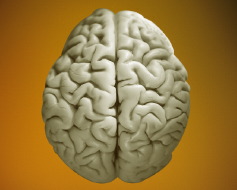| |
Neuronal
injury contributes significantly to
functional impairment in a wide variety
of peripheral and central nervous system
disorders. Such disorders include
chronic diseases such as diabetes, AIDS,
Parkinson's and Alzheimer's.
Neurological impairments characteristic
of these disorders include loss of
coordination and inability to walk,
memory loss, inability to concentrate
and other cognitive deficits. Such
impairments often become progressively
worse over weeks and years thus leading
to chronic dysfunction. An effective
neuroprotectant may be able to slow this
progression of functional capacity.
Current therapies do not adequately
treat such dyst-functional neurological
conditions. Thus, an effective
neuroprotectant drug could provide
substantial new therapeutic benefit for
many groups of patients.
|
 |
The role
of the NMDA Receptor in Neuronal Injury
Nerve cells communicate by sending
signals that excite or inhibit each
other via chemical messengers called
neurotransmitters. Neurotransmitters
bind to receptors embedded in the cell
membranes of neurons. The most common
excitatory neurotransmitter, glutamate,
binds to the NMDA receptor. When
activated by glutamate, the NMDA
receptor opens a channel in the cell
membrane through which electrically
charged calcium ions pass. Calcium flows
into the cell, reversing the electrical
charge of the neuron. This process
stimulates the neuron to send signals to
adjacent neurons.
Normal
functioning of NMDA receptors is
essential to cognitive activities of
thought, movement and perception.
Normally, neurotransmitter levels are
highly regulated by the nervous system.
In certain medical conditions, injured
nerve cells become unable to control the
normal release of neurotransmitters and
"dump" excess glutamate into
the extracellular environment. Excess
glutamate results in overexcitation of
the NMDA receptor allowing excess
calcium to enter the affected neurons .
These neurons may then swell and
rupture, releasing more glutamate into
the surrounding area, which in turn
overexcites NMDA receptors on adjacent
neurons. This cascade of neuronal
injury, referred to as "excitotoxicity,"
follows acute conditions such as stroke
and traumatic brain injury. Damaged
nerve cells also appear to release
excess glutamate in certain chronic
conditions such as neuropathic pain and
dementia.
NMDA
Receptor Antagonists
Drug
candidates that prevent excessive
activation of the NMDA receptor, termed
NMDA receptor antagonists, reduce the
potentially damaging and lethal influx
of calcium into neurons. There is
presently considerable medical and
commercial interest in developing NMDA
receptor antagonists to treat
neurodegenerative disorders. Many NMDA
receptor antagonists previously
evaluated in human clinical trials
either prevented glutamate from binding
to the NMDA receptor, or blocked the
NMDA receptor channel for a longer
period of time than was safe. While they
protected neurons from excitotoxicity,
they also prevented normal signal
communication and interfered with
essential functioning. Such interference
resulted, in some cases, in
hallucinations, psychosis or even coma.
The first NMDA receptor antagonist
tested in humans, Merck's MK-801,
produced such neuropsychiatric side
effects. A well-known NMDA receptor
antagonist, phencyclidine, is also
overly potent, producing undesirable
effects as well. Certain other compounds
tested in clinical trials have also
shown serious side effects similar to
those of MK-801.
Research
program at Neurobiogen
|